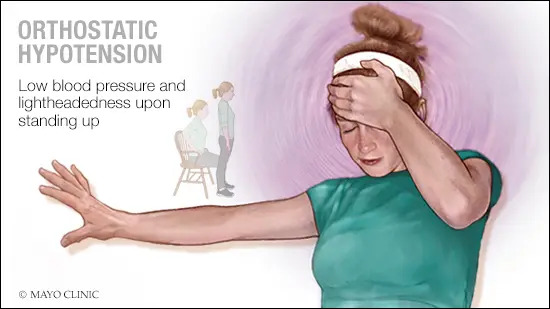Health Tips
Orthostatic Hypotension Treatment in Elderly
Orthostatic hypotension (OH) is a condition in which a person’s blood pressure drops significantly when they stand up from a sitting or lying position. This can cause symptoms such as dizziness, lightheadedness, blurred vision, and fainting. OH is more common in older adults, and it can be a sign of a serious underlying medical condition.
There are a number of things that can cause OH in older adults, including:
- Age-related changes in the autonomic nervous system, which is responsible for regulating blood pressure
- Medications, such as diuretics, alpha-blockers, and beta-blockers
- Dehydration
- Heart disease
- Diabetes
- Parkinson’s disease
- Multiple sclerosis
- Anemia
- Orthostatic hypotension can also be caused by a sudden change in posture, such as standing up quickly from a hot bath or shower.
Orthostatic Hypotension Treatment in Elderly
There are a number of things that can be done for Orthostatic Hypotension Treatment in Elderly, including:
- Non-pharmacological interventions: These include increasing fluid intake, avoiding standing for long periods of time, wearing compression stockings, and elevating the head of the bed at night (read all exercises for orthostatic hypotension).
- Medications: There are a number of medications that can be used to treat OH, including fludrocortisone, midodrine, and droxidopa.
The goal of treatment is to improve the symptoms of OH and to make the person as ambulatory as possible.
Here are some tips for treating Orthostatic Hypotension in elderly people:
- Increase fluid intake. This will help to increase blood volume and prevent dehydration, which can contribute to OH.
- Avoid standing for long periods of time. If you must stand for long periods of time, take breaks to sit or lie down.
- Wear compression stockings. These can help to prevent blood from pooling in the legs, which can also contribute to OH.
- Elevate the head of the bed at night. This will help to prevent a drop in blood pressure overnight.
- Take medications as prescribed. If your doctor prescribes medications for OH, be sure to take them as directed.
If you have any concerns about OH, be sure to talk to your doctor. They can help you to develop a treatment plan that is right for you.
Here are some additional information about OH in elderly people:
- OH is more common in older adults because of age-related changes in the autonomic nervous system. The autonomic nervous system is responsible for regulating many bodily functions, including blood pressure. As people age, the autonomic nervous system can become less efficient, which can lead to OH.
- OH can be a sign of a serious underlying medical condition, such as heart disease, diabetes, or Parkinson’s disease. If you have OH, it’s important to see a doctor to rule out any underlying medical conditions.
- With proper treatment, most people with OH can live normal, active lives. The most important thing is to make sure that you are aware of your symptoms and that you take steps to prevent them from happening.
Orthostatic Hypotension Diagnosis

To diagnose OH, your doctor will likely ask you about your symptoms and medical history. They may also perform a physical exam, which may include checking your blood pressure while you are sitting and standing. In some cases, your doctor may order other tests, such as an electrocardiogram (EKG) or a tilt-table test.
An EKG is a test that checks the electrical activity of your heart. A tilt-table test is a test that checks how your body responds to changes in position. During a tilt-table test, you will lie down on a table that is tilted up to a vertical position. Your blood pressure and heart rate will be monitored throughout the test.
If your doctor diagnoses you with OH, they will work with you to develop a treatment plan. Treatment for OH may include lifestyle changes, such as increasing fluid intake and avoiding standing for long periods of time. In some cases, your doctor may also prescribe medications to help improve your blood pressure.
With proper treatment, most people with OH can live normal, active lives.
Here are some tips for diagnosing OH:
- Talk to your doctor about your symptoms. They can help you to determine if you have OH and to develop a treatment plan.
- Have your blood pressure checked while you are sitting and standing. This can help your doctor to diagnose OH.
- Consider having an EKG or a tilt-table test. These tests can help your doctor to rule out other medical conditions and to get a better understanding of your OH.
If you have OH, it’s important to take steps to prevent symptoms. Here are some tips:
- Get up slowly from a sitting or lying position. This will give your body time to adjust to the change in position.
- Avoid standing for long periods of time. If you must stand for long periods of time, take breaks to sit or lie down.
- Drink plenty of fluids. This will help to keep your blood volume up.
- Eat a healthy diet. This will help to keep your blood pressure under control.
- Exercise regularly. This will help to strengthen your heart and improve your circulation.
If you experience symptoms of OH, such as dizziness, lightheadedness, blurred vision, or fainting, sit or lie down immediately. If you have a history of OH, it’s important to let your doctor know about any new or worsening symptoms.

